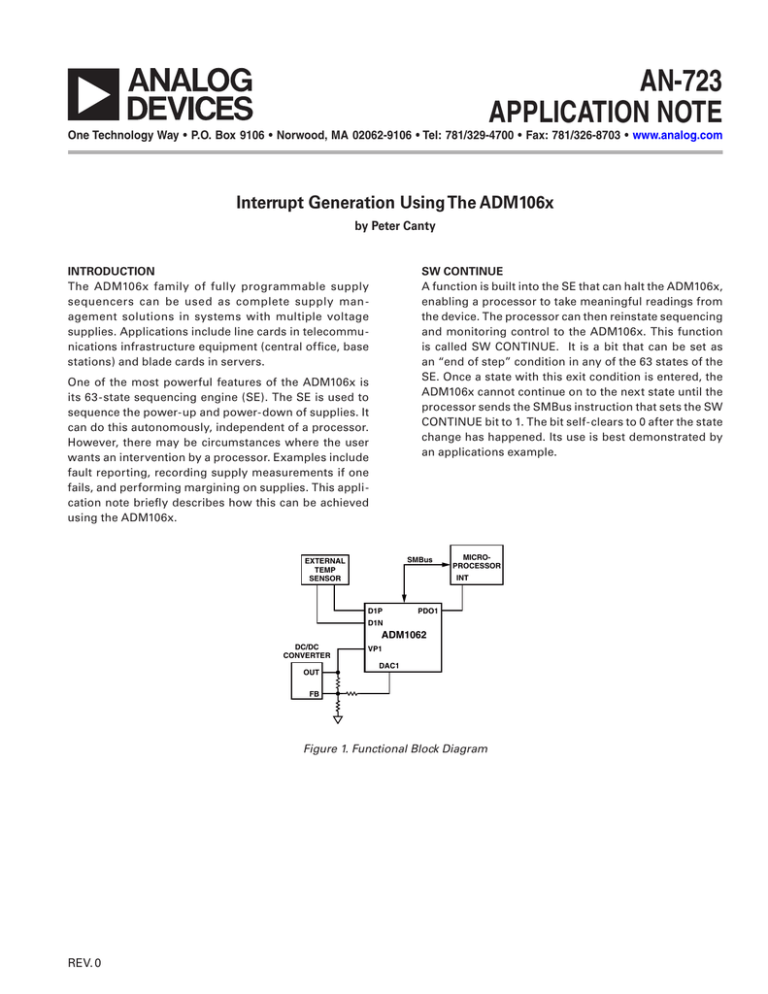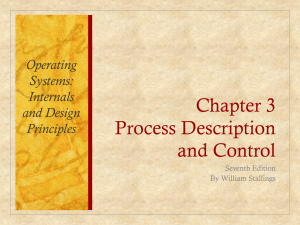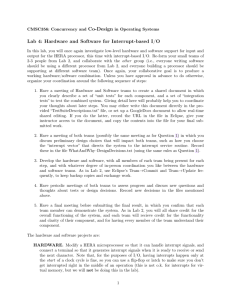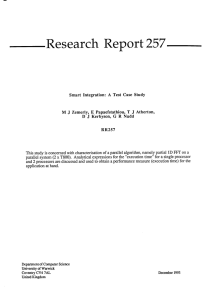AN-723 APPLICATION NOTE Interrupt Generation Using The ADM106x by Peter Canty
advertisement

AN-723 APPLICATION NOTE One Technology Way • P.O. Box 9106 • Norwood, MA 02062-9106 • Tel: 781/329-4700 • Fax: 781/326-8703 • www.analog.com Interrupt Generation Using The ADM106x by Peter Canty INTRODUCTION The ADM106x family of fully programmable supply sequencers can be used as complete supply man agement solutions in systems with multiple voltage supplies. Applications include line cards in telecommunications infrastructure equipment (central office, base stations) and blade cards in servers. SW CONTINUE A function is built into the SE that can halt the ADM106x, enabling a processor to take meaningful readings from the device. The processor can then reinstate sequencing and monitoring control to the ADM106x. This function is called SW CONTINUE. It is a bit that can be set as an “end of step” condition in any of the 63 states of the SE. Once a state with this exit condition is entered, the ADM106x cannot continue on to the next state until the processor sends the SMBus instruction that sets the SW CONTINUE bit to 1. The bit self-clears to 0 after the state change has happened. Its use is best demonstrated by an applications example. One of the most powerful features of the ADM106x is its 63-state sequencing engine (SE). The SE is used to sequence the power-up and power-down of supplies. It can do this autonomously, independent of a processor. However, there may be circumstances where the user wants an intervention by a processor. Examples include fault reporting, recording supply measurements if one fails, and performing margining on supplies. This application note briefly describes how this can be achieved using the ADM106x. SMBus EXTERNAL TEMP SENSOR MICROPROCESSOR INT D1P PDO1 D1N ADM1062 DC/DC CONVERTER OUT VP1 DAC1 FB Figure 1. Functional Block Diagram REV. 0 AN-723 PROGRAMMING THE SW CONTINUE FUNCTION IN THE ADM106x EVALUATION SOFTWARE Figure 2 shows the SE programming window of the ADM106x software. Consider a system where multiple supplies are being monitored by the ADM106x. If one of these were to fail, the user may want to interrogate the ADM106x to find which supply faulted. This could be done as follows: 1. The user programs a PWRGD state. AN04841–0–4/04(0) a. All supplies are up and being monitored in this state. b. One of the PDOs is set up as a PWRGD signal, indicating that all supplies are in tolerance. This PDO could then be used as an interrupt signal to the processor. The PWRGD state enables the PDO. c. If one of the supplies being monitored fails, the SE will move on to another state, e.g., the PWRFAIL state. 2. The user programs the PWRFAIL state. a. The PWRGD PDO changes, generating an interrupt to the processor. b. The end of step condition is programmed as follows: Figure 2. SE Window IF <SW CONTINUE> THEN GOTO CLR_INT AFTER 100ms. 3. The user programs the CLR_INT state. Figure 3. SW Continue a. The CLR_INT or CLEAR INTERRUPT state is where the PDO is reasserted, thus clearing the interrupt to the processor. The user can then choose to define another state, e.g., POWER_DOWN, RESUME. 4. The ADM106x starts the sequence of the supplies and enters the PWRGD state. Subsequently, one of the supplies fails and the ADM106x enters the PWRFAIL state. a. The ADM106x SE is now halted and cannot move on to the next state until it receives the <SW CONTINUE> command from the processor. b. The processor can now read the fault, i.e., the registers that indicate which inputs are faulting. Thus the failing supply is identified. c. The processor now issues a SW CONTINUE command. A <CONTINUE> button is provided in the ADM106x software. This is merely to write a 1 to Bit 2 of Register 0x93 (SECTRL). d. The ADM106x SE now moves on to CLR_INT. © 2004 Analog Devices, Inc. All rights reserved. Trademarks and registered trademarks are the property of their respective owners. –2– REV. 0






